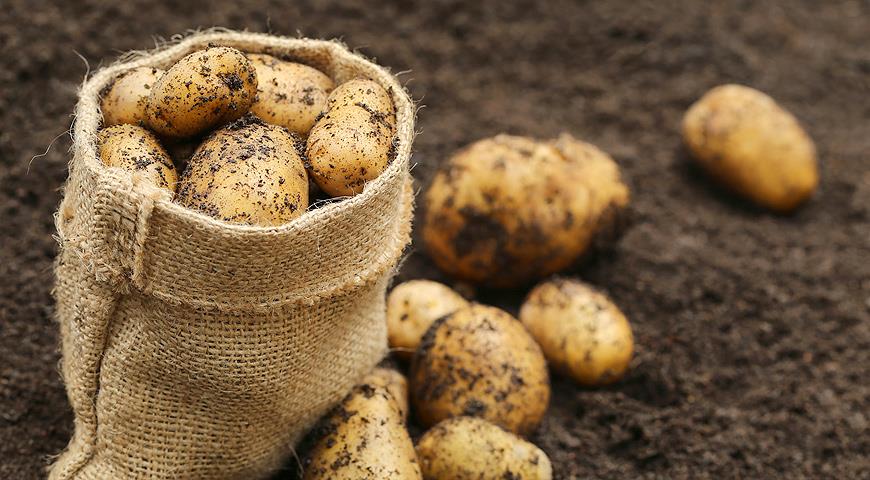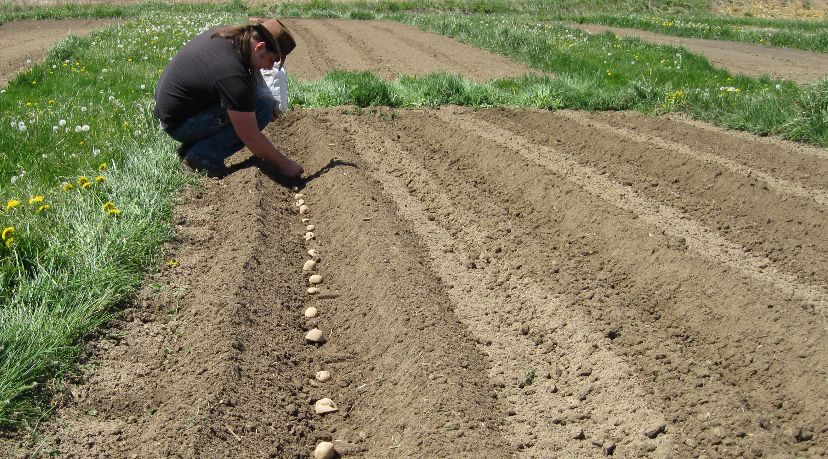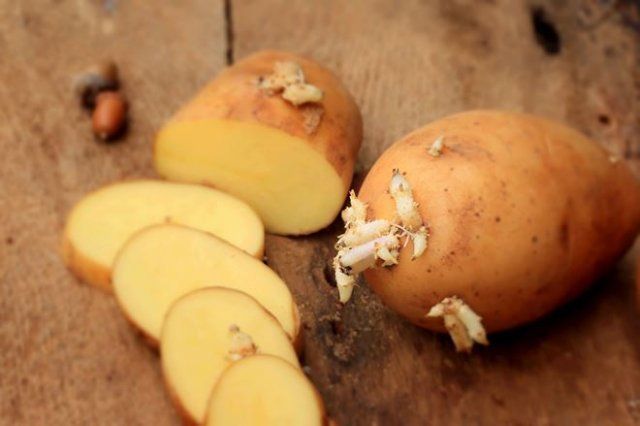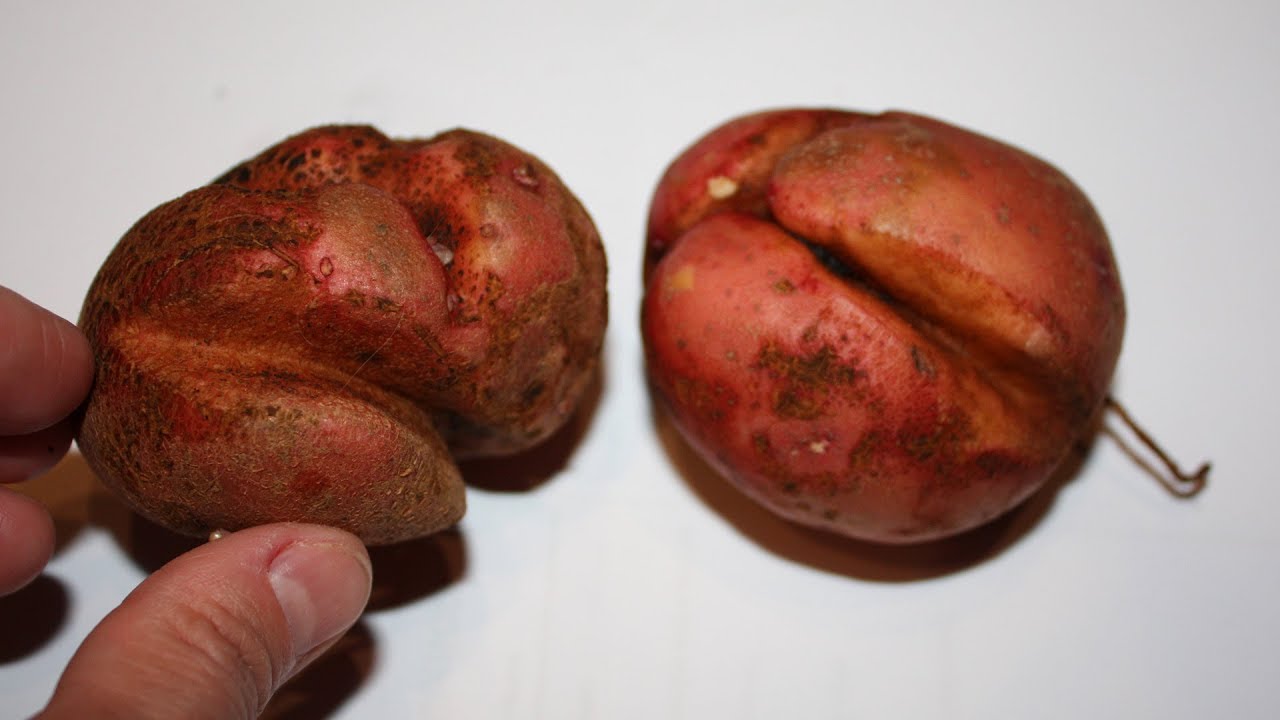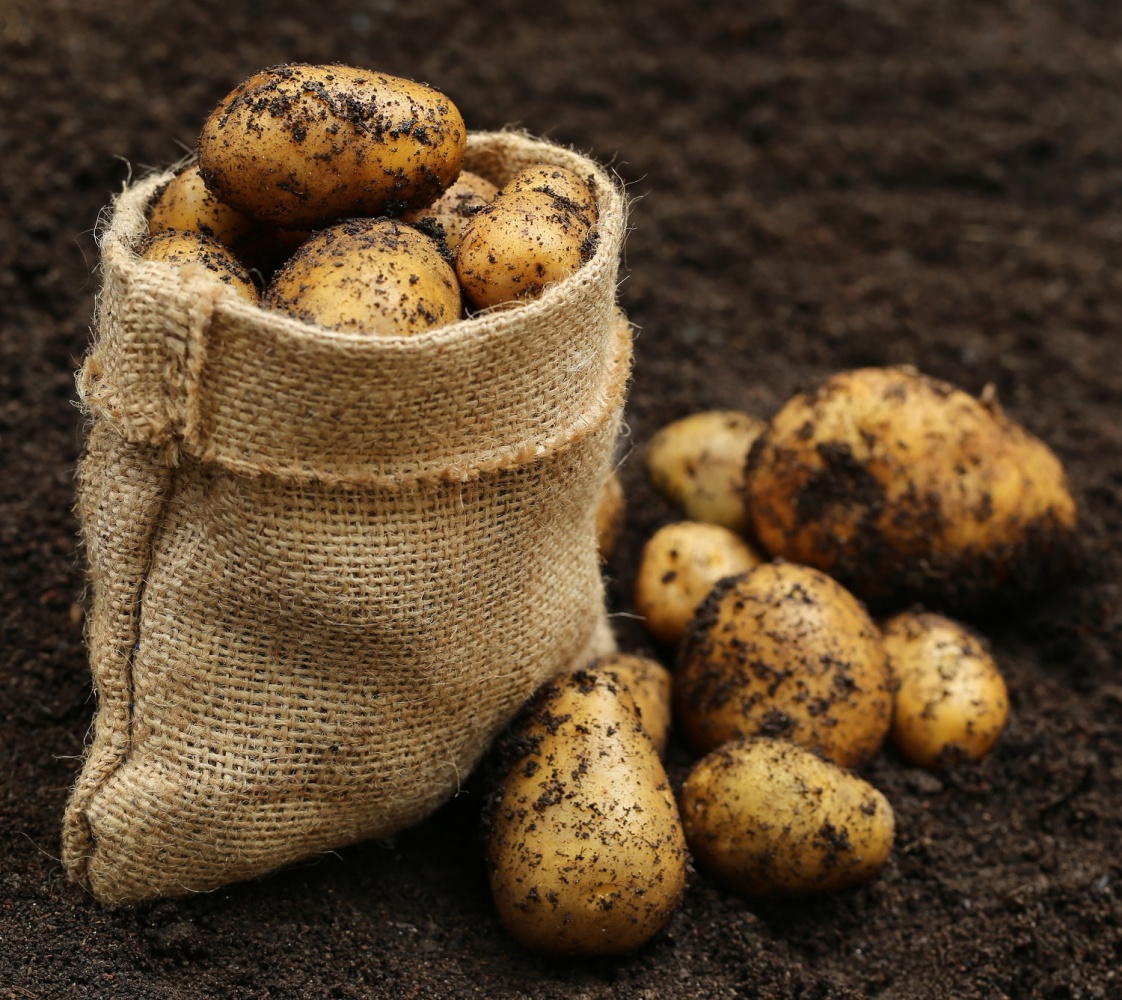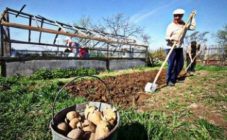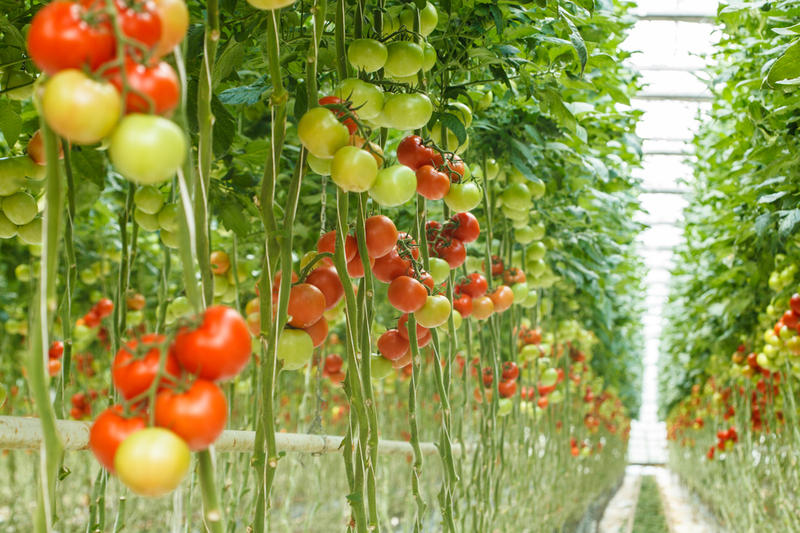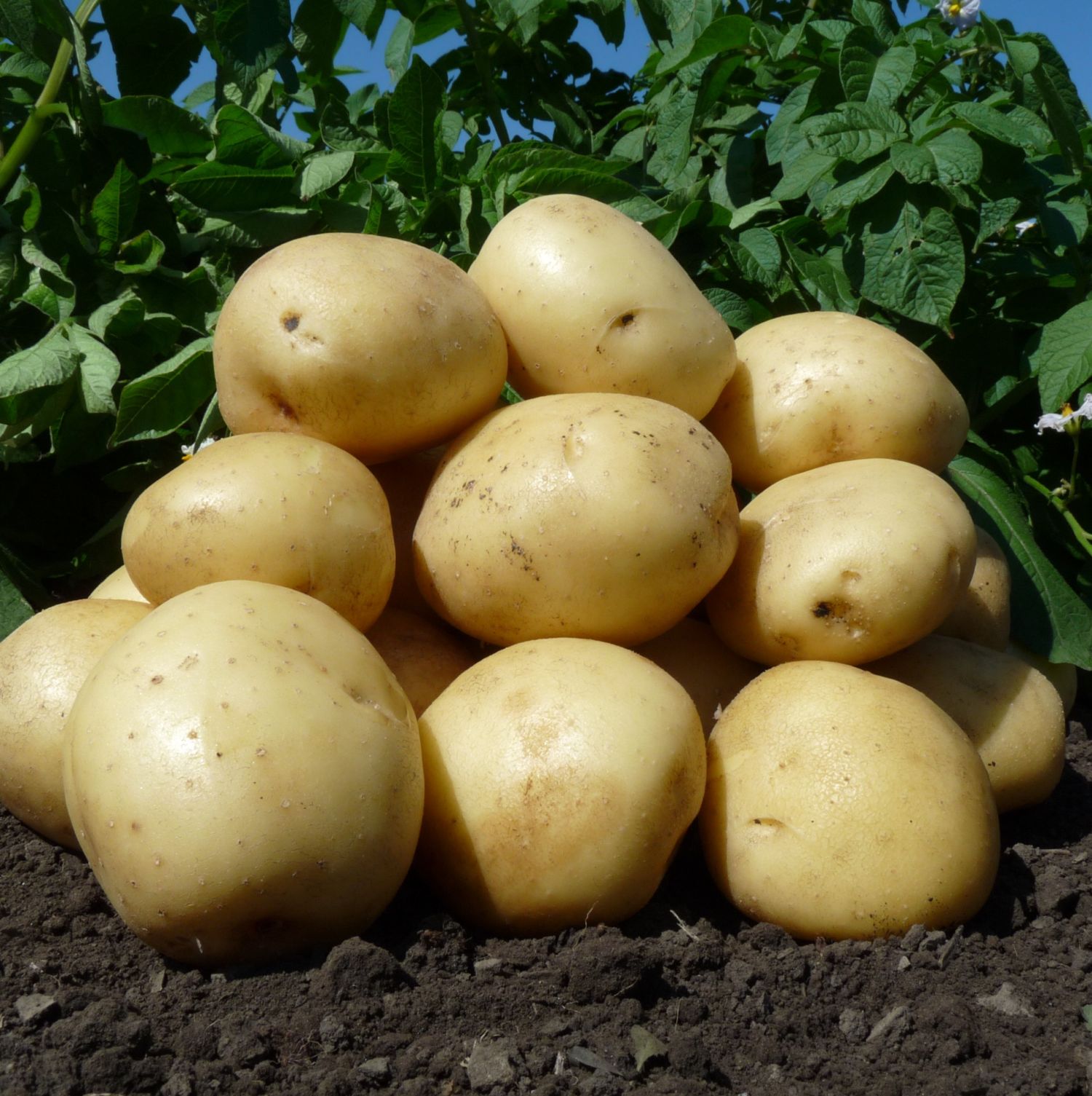Content:
Many vegetable growers are hotly debated about how to properly plant potatoes sprouting up or down. At the same time, those who are on the side of planting using the new technology have achieved good results and received a generous harvest. Adherents of traditional methods, on the contrary, suffered a fiasco. So which of them is right? This will be discussed in our article.
What are potatoes
Potatoes belong to the Solanaceae family of plants that have tubers. They have many beneficial substances for the human body. But the fruits of the plant should not be eaten in any case, since they are poisonous, due to the content of a large amount of solanine in them.
The very name "potato" comes from the German Kartoffel, which was taken from the Italian word tartufolo and translated as truffle. The herbaceous part of the plant grows up to one meter in height. In this case, the stem remains naked and has edges. Part of it is immersed in the ground by 20, or even all 50 centimeters.
The leaves of the potato are dark green in color and consist of several lobes that are placed one against the other. They are attached to a rod, which is attached to the stem with a petiole. Potato flowers form a bunch and come in white, pink and purple shades.
In the underground part of the stem, in places intended for the formation of leaves, tubers begin to form. They ripen in September. The fruits resemble a small green tomato, no more than 2 centimeters in diameter. Thanks to solanine, the plant protects against damage to the leaves and stems by bacteria and some pests. Solanine is also formed in greened tubers, and therefore they can no longer be eaten.
Potatoes are propagated using tubers or parts of it. In this case, they need to be planted to a depth of at least 5 or 10 centimeters.
How to plant potatoes correctly
When choosing a potato planting method, consider the following. First of all, the earth must be warmed up, the frost must stop. The timing of disembarkation in most cases depends on the climatic conditions. For example, at a time when a plant is already actively being planted in the south of Ukraine, snow may still lie in Russia.
Before planting potatoes: sprouts up or down, the following factors must be considered. When the tubers are planted upside down, the potatoes sprout quickly, but at the same time they are all collected in a bunch, which is not favorable for the future harvest. First of all, early sprouts can fall under late frosts. As a result, their growth will slow down. In addition, shoots that are very close to each other will prevent themselves from growing and developing. Of course, if the potatoes are planted to a depth of more than 10 centimeters, then they must be placed sprouts up.
If you put potatoes sprouts down, they will break through to the surface, bypassing the obstacle, and sprout at a distance from each other, which will contribute to their development. They sprout from the ground much later, but, thanks to this, they are not afraid of the last frost. With this method of planting, you need to remember that in this case, the depth of planting should be from 5 to 10 centimeters, no more.
Planting potatoes upside down
The potatoes must be germinated before planting them up or down. But at the same time, the sprouts should be no more than one and a half centimeters. Otherwise, they break from the weight of the tuber. The soil for planting must be well loosened and fluffed, since it must be very light. It is also recommended to mulch the ground.
The potatoes are planted at a distance of 35 centimeters, while there should be a space of 90 centimeters between the rows. You can land in the Dutch method, that is, when double rows are made. In this case, a distance of 40 centimeters is allowed between the paired rows, while the gap between the pairs should be at least one meter and twenty centimeters.
In light soil, you can make holes with a flat cutter and a scoop. In addition, at the bottom of each hole you must put a glass of humus, onion husks, chopped egg shells and a little ash. You can also use mineral fertilizers. And only after that, the potatoes are placed in the hole with sprouts down and sprinkled with the above soil mixture.
Thus, the sprouts themselves receive more moisture than with the classical planting method, and begin to actively develop, while bypassing the tuber and trying to get out. In addition, the part of the stem that remains underground develops much deeper into the ground, which contributes to the development of more tubers.
After the sprouts grow up to twenty centimeters, the potatoes are spud. In this case, the stems must be tilted to the ground and in the middle pour mulch or all the same mixture of soil and sawdust. Only five or six centimeters of the stem should be left on the surface of the row. Thanks to this method, the part of the plant that remains underground becomes even larger, and the bush itself is wider, which is facilitated by the full access of sunlight and oxygen to each individual sprout.
Thus, mulch not only helps to expand the bush, but also retains moisture at the roots of the potato bush.
Cons of this method of planting potatoes
Although planting potatoes with their eyes downward has a number of advantages, especially when viewed from a theoretical point of view, in fact, this landing method in practice has many disadvantages:
- Everyone knows that it is at the top of the tuber that a large number of eyes accumulate, and it is they that give the strongest shoots. But in the case when the planting is done with the eyes down, the plant begins to actively work to germinate them to the soil surface. But in this case, favorable conditions are necessary for successful germination. If the weather is capricious and sends a drought, then heavy rains, sprouts may disappear and not hatch;
- Several obstacles arise in front of the sprout, planted with its top down. First of all, it is the soil. In addition to her, it is necessary to bypass such an obstacle as your own roots. In addition, the so-called dormant buds begin to develop and germinate on the tuber. They also need to be avoided. For this reason, for planting, it is necessary to select planting material weighing at least 80 grams;
- The young tips of the sprouts hatch much later than those planted in the classical way. Thus, they become an excellent treat for Colorado potato beetles, as the tops of an adult plant become hard and tough;
- If potatoes are planted in this way in regions with a hot climate, then the formed young tubers develop poorly and grow;
- If the mulch is close to the tuber, it can affect it with diseases.
Reproduction of potatoes in other ways
Potatoes can be grown in several ways.
Planting with eyes is that the tuber is germinated, divided into parts, on which one or two sprouts will be placed and planted in the soil, which is already well warmed up in the sun. Before growing potatoes from the eyes, you need to cut the potatoes so that there are no more than one or two eyes on one part. It is recommended to sprinkle the cut site with ash to prevent fungi and bacteria from getting on it.
Planting seedlings
For those who are wondering: is it possible to plant potatoes without sprouts, there is another way to propagate potatoes. In this case, seedlings serve as planting material. It is obtained from the eyes, which are collected from large potatoes during cooking. In winter, this material is stored in an ash box. And a month before planting, they are planted in a box filled with a fertile ball of soil. Within a week or two, the seedlings emerge. It is planted in open ground only when its growth is at least 10 centimeters.
Planting by sprouts is done by breaking off the cuttings from the base of the tuber, which is planted in open ground. One peephole of a potato gives up to three or four shoots. At the same time, one potato allows you to collect twenty pieces of planting material.
Planting by cuttings is as follows. In early June, you need to cut a few cuttings and clean them of leaves. Then you need to plant them in prepared soil and water them every two days. After the cuttings begin to grow and develop, it is necessary to do hilling.
In most cases, all experts in agriculture propagate sprouted potatoes, but many are interested in whether it is possible to plant potatoes without sprouts. This is a natural way to grow vegetables, although seedlings will appear much later than artificially germinated tubers are planted.
Diseases and pests
Potatoes are the most essential vegetable, without which a person can no longer imagine his life. However, it suffers from many diseases that need to be fought in order to preserve the harvest. Most often, potatoes are sick with viral and bacterial diseases. At the same time, it is necessary to actively combat them, since they are harmful to the human body.
The most effective preventive measures against potato disease are:
- Regularly change the planting territory. Moreover, after potatoes, it is best to grow lupine, rye, radish and mustard. Moreover, these crops must be plowed into the soil as fertilizer;
- Choose disease-resistant potato varieties;
- Organic fertilizers should be rotted, while it is better not to abuse saltpeter;
- Tubers must not be damaged during harvest;
- The tops must be dried and burned;
- Potatoes should be stored in a room with the necessary parameters for storing potatoes;
- Before planting, the tubers must be carefully sorted out to get rid of the damaged ones.
Before planting potatoes: with eyes down or up, the gardener needs to weigh the pros and cons and decide how the planting will be carried out. Only in this case the correct decision will be made. In addition, before you start planting, you need to determine which method is best for the potatoes.
